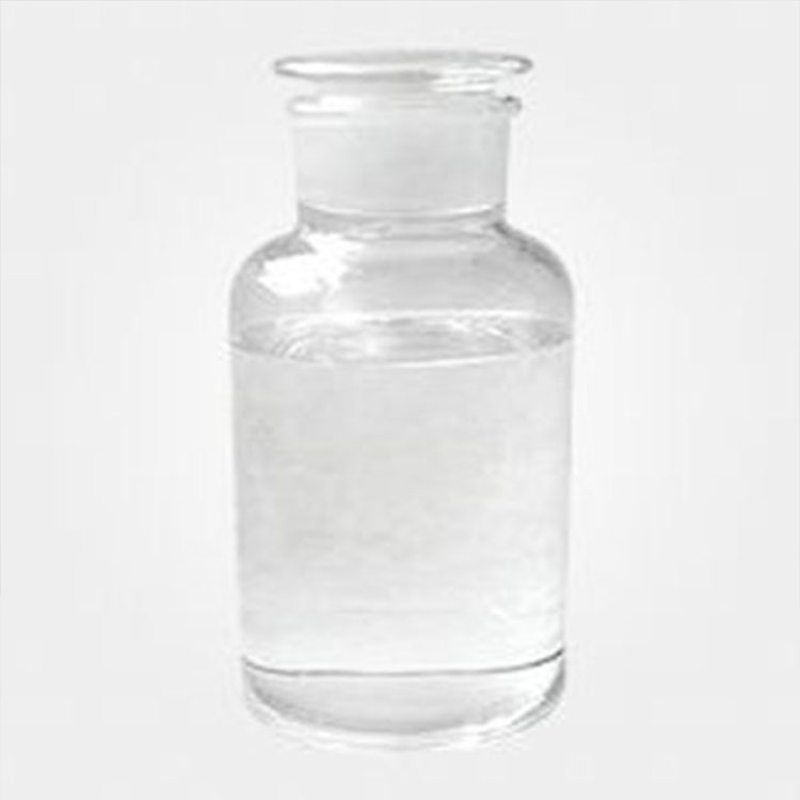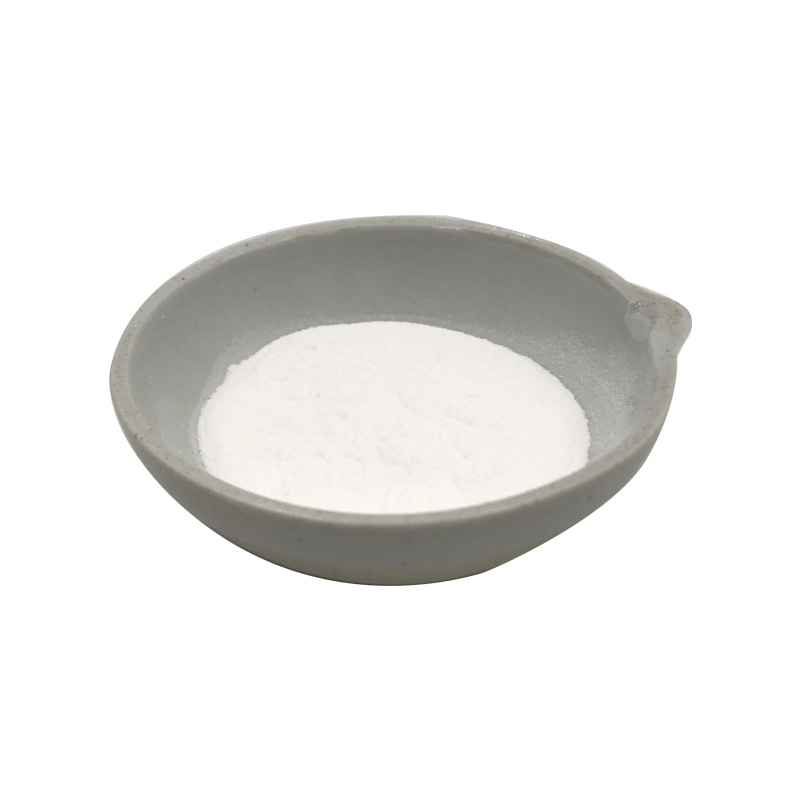Products Description of Noopept CAS#157115-85-0N-(1-(phenylacetyl)-L-prolyl)glycine ethyl ester is marketed under the trade name NOOPEPT and is used to treat obesity, alcohol dependence, degeneration, or toxic injuries.Noopept Chemical PropertiesMelting point 94.0 to 98.0 °CBoiling point 547.3±50.0 °C(Predicted)density 1.202±0.06 g/cm3(Predicted)storage temp. -20°Csolubility Soluble in DMSO (up to 25 mg/ml)form powderpka13.41±0.20(Predicted)color white to beigeoptical activity[α]/D -115 to -125°, c = 0.5 in chloroform-dStability:Stable for 1 year from da
Contact Now
Methyl Methacrylate CAS#80-62-6Methyl methacrylate is an natural compound with the system CH2=C(CH3)COOCH3. This colourless liquid, the methyl ester of methacrylic acid (MAA) is a monomer produced on a giant scale for the manufacturing of poly(methyl methacrylate) (PMMA).Methyl methacrylate is a methyl ester of methacrylic acid. It is a colourless, risky liquid with an acrid fruity odour.
Contact Now
Products Description of BISPHENOL A ETHOXYLATE DIMETHACRYLATE CAS#41637-38-1Colorless liquidBISPHENOL A ETHOXYLATE DIMETHACRYLATE Chemical Propertiesdensity 1.12 g/mL at 25 °C(lit.)refractive index n20/D 1.532Fp >230 °Fstorage temp. 2-8°CEPA Substance Registry SystemPoly(oxy-1,2-ethanediyl), .alpha.,.alpha.'-[(1-methylethylidene)di-4,1-phenylene]bis[.omega.-[(2-methyl-1-oxo-2-propenyl)oxy]- (41637-38-1)Safety InformationHazard Codes XiRisk Statements 36/37/38-43Safety Statements 26-36WGK Germany 3 Factory and Equ
Contact Now
Orthophosphoric Acid CAS#7664-38-2Phosphoric Acid, with the chemical formula H₃PO₄ and CAS number 7664-38-2, is a versatile inorganic acid that plays a crucial role in a multitude of industries.
Contact Now
N-B-HYDROXYETHYL OLEYL IMIDAZOLINE CAS#95-38-5It is widely used in the process of oil and natural gas extraction, gathering and transportation, and in the atmospheric and vacuum, catalytic cracking, hydrofining, hydrocracking and other devices of refineries to prevent corrosion of metal equipment.
Contact Now
Products Description of 2-DODECEN-1-YLSUCCINIC ANHYDRIDE CAS#26544-38-7Yellow liquid2-DODECEN-1-YLSUCCINIC ANHYDRIDE Chemical PropertiesMelting point 41-43 °C(lit.)Boiling point 180-182 °C5 mm Hg(lit.)density 1.00 g/mL at 20 °Cvapor density 9.2 (vs air)vapor pressure <1 mm Hg ( 20 °C)refractive index 1.477-1.479Fp 352 °Fstorage temp. Inert atmosphere,Room Temperaturesolubility 10g/L in organic solvents at 20 ℃form clear liquid to cloudy liquidcolor Light yellow to Yellow to OrangeWater Solubility&
Contact Now
Dimethyl carbonate CAS#616-38-6Dimethyl carbonate is quickly referred to as DMC. At room temperature, it is a colorless and obvious liquid with a pungent smell with a relative density (D204) of 1.0694, a melting factor of four °C, boiling factor of 90.3 °C, the flash factor being 21.7 °C (opening) and being 16.7 °C (closed ) and the refractive index (nd20) being 1.3687.
Contact Now
Products Description of Cesium carbonate99.9% CAS#534-17-8Cesium carbonate is an inorganic compound. It is a white solid at room temperature and pressure. It is very soluble in water and absorbs moisture quickly when placed in the air. The aqueous solution of cesium carbonate is strongly alkaline and can react with acid to produce the corresponding cesium salt and water, and release carbon dioxide. Cesium carbonate is easy to transform and can be used as a precursor of other cesium salts.
Contact Now
Products Description of Hydrogenated Starch Hydrolysate CAS#68425-17-2Hydrogenated Starch Hydrolysate is a colorless, odorless, transparent, viscous liquid. It is non-crystalline. It has strong hygroscopicity, sweet taste, and is highly soluble in water but difficult to dissolve in ethanol.
Contact Now
Products Description of 2-Deoxy-D-glucose CAS#154-17-62-Deoxy-D-glucose is an anti-metabolite of D-glucose. It has the effects of interfering with the synthesis of virus-specific glycoproteins, inhibiting the proliferation of herpes simplex virus, RAN and DNA enveloped viruses, and cancer cells. At present, antiviral and anticancer drugs prepared from 2-deoxy-D-glucose have been clinically used in the treatment of herpes simplex virus and cancer, and medical health products and anti-aging cosmetics prepared from 2-deoxy-D-glucose have also been launched on the market.
Contact Now
Ethanol CAS# 64-17-5Ethanol, additionally recognized as ethyl alcohol (or grain spirits, or alcohol), is a clear colorless, volatile, flammable solvent with a attribute odor. The boiling factor of ethanal is 78.5°C. The bio-alcohol is observed in alcoholic beverages. Concentrated alcohol has a sturdy burning taste, however it is truly candy when diluted. It is additionally increasingly more being used as a gas (usually changing or complementing gasoline).
Contact Now
Products Description of Bretazenil CAS#84379-13-5Brotacetin is a partial agonist of the GABAA receptor of the benzodiazepine class. It was first developed by Roche as an antianxiety drug. Studies have found that brotacetin can counteract the spasms caused by pentamethazine. At an antispasmodic dose (125-250 μg·kg-1), brotacetin combined with pyridostigmine (100 μg·kg-1, im) and aprofen (4 mg·kg-1, im) can prevent sarin and soman poisoning. Brotacetin has good antianxiety activity at a dose of 50-400 μg·kg-1. Compared with diazepam, it has little adverse reaction of myasthenia.
Contact Now
2-Octen-1-ylsuccinic anhydride, mixture of cis and trans Chemical PropertiesMelting point 8-12°C (lit.)density 1 g/mL at 25 °C(lit.)vapor pressure 43.5Pa at 20℃refractive index n20/D1.4694(lit.)Fp 113℃form Viscouscolor Colorless to Almost colorlessBoiling point 168°C/10 mmHg(lit.)LogP4.68 at 22℃ and pH7EPA Substance Registry System2,5-Furandione, dihydro-3-(2-octenyl)- (42482-06-4)Safety InformationHazard Codes XiRisk Statements 36/38Safety Statements 26-36WGK Germany 3HS Code 29171900Factory and Equipment ShowFast delivery timeI
Contact Now
Products Description of 1-Ethylpiperazine CAS#5308-25-8N-Ethylpiperazine (EPA) is one of the piperazine derivatives. As a pharmaceutical intermediate and fine chemical, it is widely used in pharmaceutical and organic synthesis. It is mainly used to synthesize ethyl ciprofloxacin antibiotics. It is also used as a synthetic raw material for dyes and plant protection agents. It is also widely used in fungicides and surfactants.
Contact Now
Products Description of Sodium hydrogen ferric DTPA CAS#12389-75-2White powder.Sodium hydrogen ferric DTPA Chemical Propertiesdensity 1.607[at 20℃]Water Solubility 113g/L at 30℃LogP-11.9EPA Substance Registry SystemFerrate(2-), [rel-[N(R)]-N-[2-[bis[(carboxy-.kappa.O)methyl]amino-.kappa.N]ethyl]-N-[2-[(S)-[(carboxy-.kappa.O)methyl](carboxymethyl)amino-.kappa.N]ethyl]glycinato(5-)-.kappa.N,.kappa.O]-, sodium hydrogen (1:1:1), (PB-7-13-12564)- (12389-75-2) Factory and Equipment ShowFast delivery timeInventory 2-3 working days New production 7-10 working days
Contact Now
Products Description of PHOSPHORIC ACID CAS#78-42-2PHOSPHORIC ACID is widely used as a flame retardant, plasticizer, and extraction agent in the production of chemical companies. Its most important use is the production of hydrogen peroxide.
Contact Now
Products Description of Citric acid CAS#77-92-9Zinc Phosphate (CAS#7779-90-0) is an inorganic compound that appears as a white, odorless powder. It is a zinc salt derived from phosphoric acid and is characterized by its stable properties and low solubility in water. The chemical formula for Zinc Phosphate is Zn3(PO4)2, and it has a molecular weight of 422.12 g/mole. This compound is commonly used as a corrosion inhibitor, particularly in primer paints due to its ability to provide cathodic protection.
Contact Now
4,4'-DIBROMO-2,2'-BIPYRIDINE Chemical PropertiesMelting point 138.0 to 142.0 °CBoiling point 362.9±37.0 °C(Predicted)density 1.809±0.06 g/cm3(Predicted)storage temp. Keep in dark place,Sealed in dry,Room Temperaturesolubility soluble in Tolueneform powder to crystalpka2.59±0.18(Predicted)color White to Light yellowInChIInChI=1S/C10H6Br2N2/c11-7-1-3-13-9(5-7)10-6-8(12)2-4-14-10/h1-6HInChIKeyKIIHBDSNVJRWFY-UHFFFAOYSA-NSMILESC1(C2=NC=CC(Br)=C2)=NC=CC(Br)=C1CAS DataBase Reference18511-71-2Safety InformationRisk Statements 36/37/38Safety Statements&nb
Contact Now
Products Description of 2,5-Bis(5-tert-butyl-2-benzoxazolyl)thiophene CAS#7128-64-5This product is yellow-green powder. Melting point 200-201℃, decomposition temperature greater than 220℃. Insoluble in water, soluble in alkanes, fats, mineral oils, waxes and common organic solvents. Solubility/(g/100ml): methanol 0.05; acetone 0Chemicalbook.5; toluene 5.3; carbon tetrachloride 5.9; tetrahydrofuran 5.5; DMF 0.8; chlorobenzene 10.2; cyclohexane 3.3; xylene 5.5; dioctyl phthalate 0.7; water 0.01.
Contact Now
Products Description of 2-Amino-5-chloropyrazine CAS#33332-29-52-Amino-5-chloropyrazine is a pyrazine compound, mainly used as an organic intermediate.CAS No.
Contact Now
Products Description of Alginic acid CAS#9005-32-7Alginic acid is a viscous organic acid, also known as alginic acid and alginic acid. The product is white to light yellow-brown powder. The average molecular weight is about 240,000. Melting point>300℃. It is slightly soluble in hot water, and the viscosity of its aqueous solution is 4 times higher than that of starch. It is insoluble in cold water and organic solvents, and slowly dissolves in alkaline solutions.
Contact Now
Products Description of Acetic acid CAS#64-19-7Acetic acid, commonly known as acetic acid (AcOH), is named after the main component of vinegar and is one of the most important fatty acids. It generally exists in many plants in free form or in the form of esters in nature. Molecular formula CH3COOH. The brewing and use of vinegar has a history of thousands of years. There are records of vinegar making in ancient China. However, concentrated acetic acid was successfully developed by Stahl in 1700. Pure acetic acid is a colorless liquid with a pungent taste.
Contact Now
Products Description of Pyridine-2,6-dicarboxylic acid CAS#499-83-2Pyridine-2,6-dicarboxylic acid is an important pharmaceutical synthesis intermediate with a wide range of uses. Pyridine-2,6-dicarboxylic acid exists naturally in bacterial spores, but the content is low, which cannot meet the demand, and it is not easy to extract. It is not conducive to industrial production and application.
Contact Now
Products Description of Imidazole CAS#288-32-4 Imidazole, with the molecular formula C3H4N2, is an organic compound, a type of diazole, and a five-membered aromatic heterocyclic compound containing two meta-nitrogen atoms in the molecular structure. The unshared electron pair of the 1-nitrogen atom in the imidazole ring participates in the cyclic conjugation, and the electron density of the nitrogen atom is reduced, making it easy for the hydrogen on this nitrogen atom to leave in the form of hydrogen ions.Imidazole is acidic and alkaline, and can form salts with strong bases.
Contact Now


































